Introduction
Last updated February 2023
There's a real issue surrounding the topic of exercising with arthritis. The first thing you need to know is that exercise is really beneficial for the prevention and management of arthritis. The issue is that, access to good information regarding exercising with arthritis is scarce.
In this article I will give you up to date and evidence based information about exercising with arthritis.
There is a lot of contradictory information out there when it comes to exercising with arthritis. One of the more common beliefs is that exercise will contribute to the wear and tear of an arthritic joint and make it worse. This hypothesis doesn't stand up to what we know about arthritis today.
Arthritis is a very complex disease and so we need to unpack the question about exercising with arthritis a little bit further before we can get to specific recommendations.
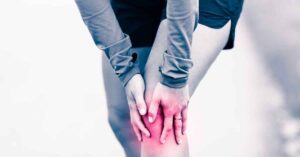
What is arthritis and why does it affect the elderly?
It's important to firstly define arthritis and understand the differing types. Arthritis is a term that is used to talk about many disorders that affect our joints.
There are in fact over 100 types of arthritis and they all manifest themselves in differing ways. Some types of arthritis are very different to others.
For the purposes of this article I will be focusing primarily on Osteoarthritis. Unless stated otherwise, you can assume that the arthritis I am referring to in the remainder of this article is Osteoarthritis.
Osteoarthritis is a highly prevalent worldwide disease that can affect any joint. However is it most commonly seen in the larger, more weight bearing joints including the knees, the hips and the spine. It is also commonly seen in the hands and fingers.
Arthritis is more common in the elderly but not simply because of wear and tear. There are lots of risk factors that contribute to the development of arthritis. It just happens that lot's of these risk factors are associated with older age.
Signs and symptoms of arthritis
The main signs and symptoms of arthritis is joint stiffness and joint pain. Some people also have trouble moving the affected joint.
Other less common signs and symptoms include swelling, tenderness and a grating or cracking sound when moving the affected joint.
For some arthritis sufferers the symptoms come and go. Others can have arthritis and not have any symptoms at all. This is often shown via scans.
For other sufferers the symptoms can be chronic and debilitating. For these people exercising with arthritis can seem extremely challenging and very daunting.
What Causes Arthritis
The actual cause of arthritis is a little more complicated than commonly believed. It is often thought that arthritis is simply as a result of wear and tear of the joints. Whilst this is true to an extent it is a little more nuanced than a lot of people believe.
The wear and tear that lots of people refer to and believe is the cause of arthritis isn't seen on a population wide basis.
Therefore it isn't accurate to say it's simply a wear and tear issue. If it was, all older people would suffer from arthritis and this isn't the case.
There isn't a direct correlation between how much people use their joints across a lifetime and resulting arthritis in later life.
Some people are incredibly active all their lives and don't suffer with arthritis in later life at all whilst others can lead a relatively sedentary lifestyle and suffer terribly with arthritis in later life.
There are some common risk factors which include:
- Previous injury at a joint
- older age
- being a women
- obesity
- family history
- other conditions (such as other types of arthritis like rheumatoid or gout)
The actual cause of arthritis is multifaceted but the primary cause is a loss of cartilage surrounding the ends of the bones that makes up a joint. This loss of articular cartilage leads to a narrowing space between the bones of the joint.
The cartilage is present to help the bones glide smoothly as the joint is in action.
Once the cartilage wears away the smooth gliding is reduced and in some cases the bones can rub to together. It's the reduced smooth gliding that contributes to the pain associated with arthritis.
How can I get fit with arthritis?
Many arthritis sufferers completely give up doing exercise. There is often a variety of different reasons why this happens, such as:
- It's painful
- Scared of making arthritis worse
- Arthritis leading to demotivation
- Unsure of what type of exercise is good or safe for arthritis
- Lack of education or clarity around exercising with arthritis
These are all valid and real issues. However arthritis is only made worse by sedentary behaviour.
It's perfectly possible and actually highly advised that you exercise to help mange your arthritis. There are many forms and types of exercise that you can do despite having arthritis.
In a lot of cases it's simply about choosing exercises that best fits around your mobility issues.
However, there are also some specific forms of exercise that are advised to help reduce arthritic pain and it's progression.
I'll talk more in depth about these later in the article.
Does inactivity make arthritis worse?
This is a common question and one that is often very confused. It's important to look beyond inactivity and arthritis specifically because leading an inactive lifestyle has so many other potential negative health associations.
It's VERY important to stay active at all ages to promote optimal health and arthritis won't and shouldn't stop that.
Being inactive can certainly lead to your arthritis causing you more pain. General stiffness is likely to increase with an inactive lifestyle and lack of muscle strength will also contribute to worsening arthritis.
Studies have shown that exercising with arthritis, including strength training exercise can reduce arthritis related pain.
When we exercise we innervate the muscles and joints. Exercise promotes blood flow to our muscles and joints which feeds them vital nutrients.
With chronic inactivity our joints won't be as well nourished and this can lead to worsening arthritis.
So it's not just that inactivity can make arthritis worse, there is also the fact that activity can make it better.
Exercising with arthritis
There are many types of exercise that you can do when suffering with arthritis. In a lot of cases, choosing a low impact activity will be more helpful at managing discomfort and pain when exercising with arthritis.
For example, people suffering with knee, hip or spinal arthritis should probably avoid running. Running or jogging would be considered a high impact activity in that there is a lot of repetitive impact from the foot striking the ground.
Cycling or swimming would be far better options. Neither of these options involves in any impact on the joints.
In general walking is comfortable for most arthritis sufferers and should be done as regularly as possible. For some people, using an aid such as a walking stick on knee brace can be helpful and make walking more comfortable.
Sporting activities can be great options for increased exercise. There are more and more specific sports cropping up for older adults with limited mobility.
Things like 2 bounce tennis, bowls, older adult netball, golf etc are likely to be available in your area. Have a look online and see what you can find.
Sporting activities can inject a lot of fun into exercise whilst also being very sociable and great for cardiovascular health.
Exercising to help morning stiffness from arthritis
For those who suffer with morning stiffness you can do 5-10 minutes of gentle exercise before you even get up to help loosen up your joints. The Wise Fitness Academy has some great morning routines that you can do whilst lying down on your bed.
Arthritis is not a reason to dial back or stop exercising. It's exactly the opposite. It's a huge reason to step up your exercise regime. Exercise is one of the best methods of managing arthritis effectively.
If you're worried about starting exercise and are unsure about what exercise types to try then talk to someone who can steer you in the right direction.
We have lots of clients who suffer with arthritis in the Wise Fitness Academy who are far more confident now they have been educated and empowered.
Can you still lift weights with arthritis?
YES, absolutely you can. And it's highly recommended that you do.
We are big on strength/resistance training at the Wise Fitness Academy and encourage all out members to participate in weight lifting. You can read more about the benefits of weight lifting for older adults by clicking here
Lifting weights does not have to stop because you have arthritis. Many arthritis suffers are scared to lift weights because they believe it will damage the affected joint/s even more.
This isn't the case.
This study took 76 patients with severe hip or knee arthritis and assigned them to specific exercises contained in the The NEuroMuscular Exercise training program.
Overall the participants reported manageable levels of pain as well as DECREASED pain and were even able to progress their training across the 12 week trial. Bear in mind again that these participants had severe arthritis and were all on the waiting list for full joint transplants.
There are so many exercise variations to choose from, sometimes it's simply a case of finding the best exercises that work for you and your arthritis.
A decrease in muscle size and strength is associated with the onset of osteoarthritis. This fact highlights the importance of resistance training at all stages of life, not just in older age and for those suffering with arthritis.
Is it normal to feel pain when exercising with arthritis?
This is a huge and very understandable reason why exercising with arthritis causes fear and hesitancy. Especially weight lifting.
Firstly, it's normal and OK to feel pain in your affected joint when exercising. In most cases, the presence of pain would be a reason to stop but with arthritis pain is considered a normal side effect of exercising.
This article talks more in depth about pain and arthritis.
Studies strongly suggest that the pain will reduce over time. And as the previous referenced study showed, pain was deemed manageable by the severe arthritis sufferers during exercise. There were in fact very few adverse effects that were reported.
When we begin to exercise the body releases synovial fluid into the joint. This fluid acts as a lubrication and allows the joint to glide more comfortably.
Doing a suitable warm with gentle exercises will promote the production of synovial fluid and allow you exercise with manageable pain.
Post exercise pain is also significantly reduced with regular exercise.
Can exercise make arthritis worse?
Exercise won't make your arthritis worse as long as you choose appropriate exercises and manage you progression.
If exercise is incorporated effectively it will actually make your arthritis better.
Any exercise that is done with bad technique increases the risk of injury. The last think thing you want to do is create an injury on top of your existing arthritis.
For this reason is it advisable to seek help if you're unsure about how to exercise safely.
Because feeling pain is relatively normal when exercising with arthritis it is easier to perform exercises badly and associate the pain with your arthritis as opposed to the bad technique. This fact further highlights the importance of seeking exercise guidance.
Jumping into an exercise programme that is too advanced also puts you at a higher risk of injury. Progression needs to be managed carefully.
How often should you exercise with arthritis?
Studies show that exercise needs to be done regularly in order to actually reap the most benefits from your efforts.
It's not going be very optimal to exercise once per month or even once per week.
It has been shown that exercising 3 times per week will help reduce pain and other symptoms of arthritis.
Exercise types should ideally be a combination of aerobic and strength/resistance styled training. They don't have to be done at the same time however.
You would ideally do your resistance training 3 x per week and then your aerobic training separately.
Lot's of the Wise Fitness Academy clients started slowly and built up their exercise routine overtime.
It can seem very overwhelming to suddenly find out that you should be doing 3 strength training sessions per week in order to improve your arthritis but overtime it can effectively incorporated into your lifestyle.
Consistency is very important for long term results.
It's no good doing a few months worth of exercise and then stopping. Once you've stopped you can expect your arthritis to get worse and your strength and mobility to decline.
It's important to understand that a new habit is needed. A lasting habit that will become a part of your life.
This is where having some external guidance can be invaluable.
Can arthritis be reversed with exercise?
Arthritis can't be reversed by exercise because the loss of cartilage has already happened.
It can however prevent things like osteoporosis and sarcopenia which are both associated with arthritis.
It can also be very effective at managing the pain that's often caused by arthritis and give you far great mobility, fitness, independence, confidence, reduced risk of falls, balance and better health across all parameters.
Exercise can also significantly slow down the progression of your arthritis.
High impact vs low impact exercise and arthritis
Summary of main points regarding exercising with arthritis
- Exercise is strongly advised to help manage the symptoms of arthritis.
- Resistance training specifically helps to stabilise the joint and reduce the symptoms of arthritis.
- Aerobic exercise should still be done it's prudent to pick lower impact exercises.
- It's normal to feel pain during exercise with arthritis but this pain should ease over time.
- Exercise should be done at least 3 times per week for optimal benefits regarding both arthritis and general health
- You should seek out help and guidance if you are unsure about how to get started.

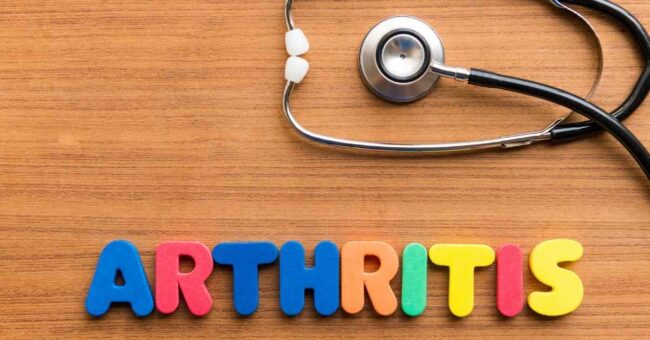
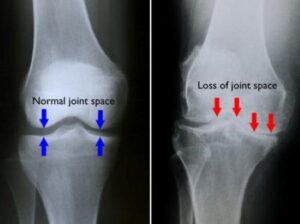
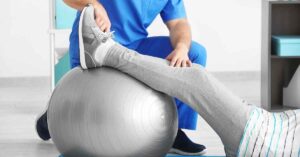
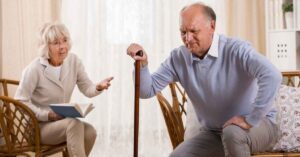

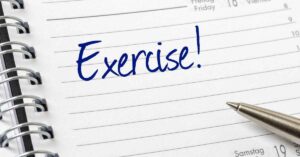
[…] Don't forget, discomfort and minimal pain is normal if you have arthritis at the specific joint you are exercising. You can read more about exercising with arthritis here […]
[…] If you want some further information on exercising with arthritis you can read my article "Exercising with arthritis" […]